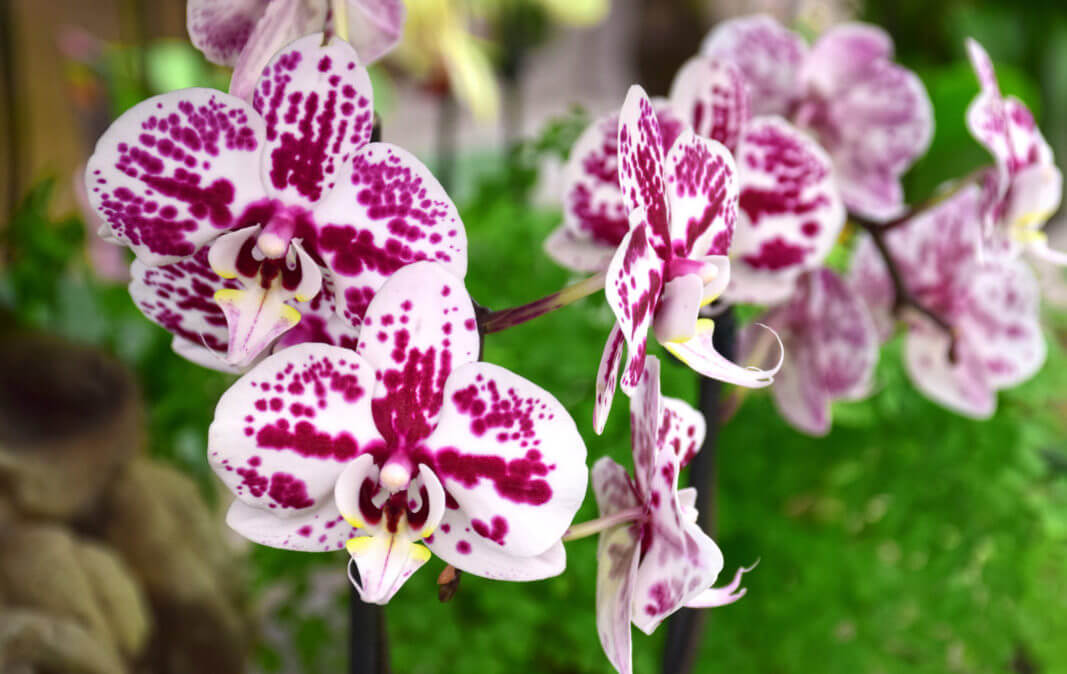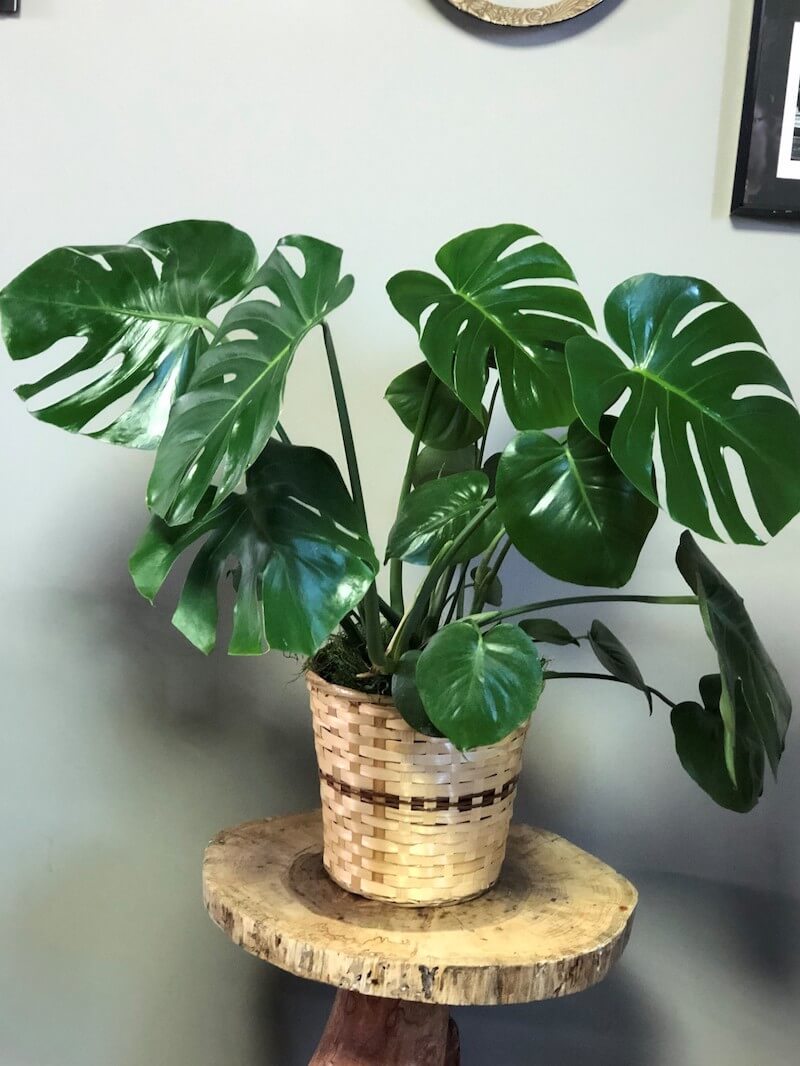[Ebook Việt Hoá] What's wrong with my houseplant (Có vấn đề gì với cây trong nhà của tôi?) - David Deardorff & Kathryn Wadsworth
[Ebook Việt Hoá] What’s wrong with my houseplant?: INTRODUCTION: Prepare for Success (GIỚI THIỆU: Chuẩn bị cho thành công)
- Biên tập: Dũng Cá Xinh
- Người dịch: Hạnh Nguyên
TIẾNG ANH
INTRODUCTION: Prepare for Success (GIỚI THIỆU: Chuẩn bị cho thành công)
Houseplants are a relatively recent phenomenon. For most of human history we did not have glass windows, and the insides of our homes were too dark for plants. When glass was first manufactured, only the very wealthy could
afford it, but 150 years ago inexpensive pane glass became available for the first time, allowing ordinary homes to have large glass windows. That was during the Victorian era, the Age of Exploration, when botanical wonders from all over the world were brought back to England and Europe. Exotic palm trees and ferns from tropical climes were all the rage in Victorian parlors. During the 1960s, interest in growing houseplants peaked again, and making macramé plant hangers for hanging baskets became a national fad. Today, houseplants are once again popular and affordable, a result of newer production technologies, like tissue culture, combined with low- cost labor in Asia, and efficient distribution systems.


Why grow plants indoors? Houseplants sat- isfy the atavistic need many of us have for con- tact with green growing things, a need that is apparently encoded in our genes. Flowers beau- tify our personal spaces, brightening the home and lightening the heart. Flowering houseplants, like orchids and African violets, can decrease stress, a therapeutic value that has only recently been recognized and studied. Simply arranging a collection of houseplants can be a creative outlet. Some people like to grow a variety of bromeliads on a large, artistic branch or piece of driftwood which they call a bromeliad tree. Even the act of caring for our plant companions is therapeutic.
More impressive still, indoor plants improve air quality. Chemicals that have an adverse effect on human health commonly outgas from ply- wood, carpets, upholstery, and cleaning prod- ucts. Research at the University of Georgia and elsewhere shows that certain houseplants reduce our exposure to these chemicals and filter pollutants from the air, providing clean air for us to breathe. A two-year study under- taken by NASA and the Associated Landscape Contractors of America identified several different houseplants that were able to remove the organic chemicals benzene, trichloroethylene, and formaldehyde from indoor air. All the philo- dendrons and many other plants in this book (see sidebar) are valued members of the house- hold for their proven ability to remove chemicals from indoor air.
Tropical broadleaf evergreens adapted to low light and warm nights generally make the best houseplants. They are pre-adapted to grow well in our warm, dark homes because they evolved in similar habitats, such as the floor of tropical rainforests. As permanent mem- bers of the household these plants succeed with minimum fuss.
Cacti and succulents that come from the tropical deserts of the world also make good houseplants. Their native habitat has full sun and warm nights, and many require bright light indoors.
Culinary herbs commonly grown on kitchen windowsills make acceptable houseplants. These temperate zone plants come from the Mediterranean, which makes them generally more temperamental than tropicals. Few temperate plants are able to tolerate warm nighttime temperatures.
And finally, plants that function as “living bouquets,” such as spring bulbs, florist azaleas, and Persian violets, can reside in our homes only temporarily. When their flowers fade, the plants go back outside or are discarded.
What is not a houseplant? Perennial plants from temperate zones that require cool night time temperatures are physiologically incapable of growing well inside our homes. Warm tem- peratures at night kill them. Perfect examples of this category include miniature roses and dwarf apple trees.
To flourish, houseplants need the right amount of light, the right temperature, the cor- rect amount of water and humidity, and appro- priate potting media and fertilizer. Like all other plants, they respond to the changing sea- sons of the year. The number of hours of day- light changes with the seasons, along with the temperature and humidity; these environmen- tal cues signal the plant to respond with active vegetative growth and flowering, or dormancy and rest. Adapting your care to an individual plant’s needs and to seasonal changes will assure success.
A to Z of Air-filtering Plants
- Arrowhead plant
- Bird’s nest philodendron
- Blushing philodendron
- Caladium
- Calla lily
- Chinese evergreen
- Corn plant
- Dragon tree
- Dumb cane
- Flamingo flower
- Heart-leaf philodendron
- Peace lily
- Pothos
- Selloum
- Snake plant
- Spider plant
- Split-leaf philodendron
- Wandering Jew
- Wax plant
- Weeping fig
- Zanzibar gem
TIẾNG VIỆT
GIỚI THIỆU: Chuẩn bị cho Thành công
Trồng cây cảnh trong nhà là xu hướng mới gần đây. Trước kia, nhà không có cửa sổ kính nên sẽ không cung cấp đủ ánh sáng cho cây cối. Khi thủy tinh lần đầu tiên được sản xuất, chỉ những người rất giàu mới có thể mua nó. Tuy nhiên, cách đây 150 năm, kính ốp với giá cả tương đối đã xuất hiện. Từ đó, những gia đình bình thường có thể sở hữu cửa sổ kính lớn.
Khi ấy là thời kì Victoria, Thời đại Khám phá, các kỳ quan thực vật từ khắp nơi trên thế giới được đưa đến Anh và Châu Âu. Những cây Cọ và Dương Xỉ kỳ lạ từ vùng khí hậu nhiệt đới tạo ra các “cơn sốt” tại phòng khách thời Victoria. Trong những năm 1960, hứng thú với cây trong nhà lại trỗi dậy. Làm macramé để treo cây đã trở thành mốt trên cả nước.
Ngày nay, cây trồng trong nhà một lần nữa trở nên phổ biến với giá cả phải chăng. Đây là kết quả của các công nghệ sản xuất mới như nuôi cấy mô cùng với nguồn lao động chi phí thấp ở châu Á và hệ thống phân phối hiệu quả.


Tại sao chúng ta trồng cây trong nhà? Chính vì cây cảnh trong nhà thỏa mãn nhu cầu tiếp xúc với cây xanh trong gen của chúng ta. Hoa sẽ làm đẹp không gian sống, làm ngôi nhà sáng sủa thêm và sưởi ấm trái tim chúng ta. Theo như một nghiên cứu gần đây, hoa trong nhà như hoa Lan và hoa Tử Linh Lan (African violets) có thể làm giảm căng thẳng.
Việc đơn giản như sắp xếp lại vị trí cây trồng trong nhà cũng thể hiện được tính sáng tạo. Một số người thích trồng các loại cây Bìm Bịp trên một cành lớn hoặc một khúc gỗ lũa đẹp. Rồi họ gọi chúng là cây Bìm Bịp. Ngay cả việc chăm sóc cho cây cối – người bạn đồng hành với chúng ta, cũng có tác dụng chữa bệnh.
Cây thường xanh lá rộng nhiệt đới thích nghi với ánh sáng yếu và ban đêm ấm áp thường làm loại cây trồng trong nhà tốt nhất. Chúng đã thích nghi trước để phát triển tốt trong những ngôi nhà ấm áp và khá tối của chúng ta. Điều này là bởi chúng tiến hóa trong những môi trường sống tương tự, chẳng hạn như tầng thấp của rừng mưa nhiệt đới. Mọi người thường lựa chọn loại cây này vì chúng rất dễ phát triển lại tốn ít công chăm sóc.
Xương rồng và các loài cây mọng nước đến từ các sa mạc nhiệt đới trên thế giới cũng thích hợp làm cây trồng trong nhà. Môi trường sống bản địa của chúng có đầy đủ ánh nắng mặt trời và ban đêm ấm áp, rất nhiều loài trong số đó cần nhiều ánh sáng trong nhà.
Các loại thảo mộc dành cho ẩm thực thường được trồng trên bệ cửa sổ nhà bếp có thể được coi như cây trong nhà. Các loài thực vật vùng ôn đới này có nguồn gốc từ Địa Trung Hải. Vì vậy, chúng thường “thất thường” hơn so với các loài thực vật nhiệt đới. Rất ít cây ôn đới có thể thích nghi với nhiệt độ ban đêm ấm áp.
Cuối cùng, các loại cây giống “bó hoa sống” như hoa dạng búp của mùa xuân, hoa Đỗ Quyên (florist azaleas) và hoa Violet Ba Tư (Persian violets), chỉ có thể sống tạm trong nhà. Khi hoa tàn, cây sẽ được đưa ra bên ngoài hoặc bị bỏ đi.
Những loại cây gì không phải là cây trong nhà? Các cây lâu năm từ các vùng ôn đới yêu cầu nhiệt độ ban đêm mát mẻ sẽ khó phát triển tốt ở trong nhà. Nhiệt độ ấm áp vào ban đêm sẽ giết chết chúng. Điển hình như hoa Hồng Nhỏ và cây Táo Lùn.
Cây trong nhà cần ánh sáng, nhiệt độ, lượng nước, độ ẩm, giá thể và phân bón thích hợp để phát triển tốt. Giống như tất cả các loài thực vật khác, chúng có phản ứng khi giao mùa. Số giờ sáng ban ngày thay đổi theo mùa, cùng với nhiệt độ và độ ẩm. Những thay đổi này báo hiệu cho thực vật thực vật để chúng điều chỉnh quá trình phát triển sinh dưỡng, ra hoa, ngủ đông hay nghỉ ngơi. Điều chỉnh việc chăm sóc phù hợp với nhu cầu của từng loại cây và những thay đổi theo mùa sẽ giúp bạn thành công.
Những loại cây lọc không khí
- Bạch Hồ Điệp (Arrowhead plant)
- Cây Tổ Chim (Bird’s nest philodendron)
- Cây Ửng Hồng (Blushing philodendron)
- Môn Kiểng (Caladium)
- Hoa Calla lily
- Cây Phú Quý (Chinese evergreen)
- Thiết Mộc Lan (Corn plant)
- Huyết Rồng (Dragon tree)
- Vạn Niên Thanh (Dumb cane)
- Hồng Môn (Flamingo flower)
- Trầu Bà Lục Lăng (Heart-leaf philodendron)
- Lan Ý (Peace lily)
- Trầu Bà (Pothos)
- Cây Lá Tai Chia (Selloum)
- Lưỡi Hổ (Snake plant)
- Lục Thảo Trổ (Spider plant)
- Trầu Bà Lá Xẻ (Split-leaf philodendron)
- Thài Lài Tía (Wandering Jew)
- Cẩm Cù (Wax plant)
- Si (Weeping fig)
- Kim Tiền (Zanzibar gem)
![[Ebook Việt Hoá] What’s wrong with my houseplant?: INTRODUCTION: Prepare for Success (GIỚI THIỆU: Chuẩn bị cho thành công) [Ebook Việt Hoá] What’s wrong with my houseplant?: INTRODUCTION: Prepare for Success (GIỚI THIỆU: Chuẩn bị cho thành công)](https://vn1.vdrive.vn/codai.net/2021/03/1-introduction-prepare-for-success-gioi-thieu-chuan-bi-cho-thanh-cong.jpg)


